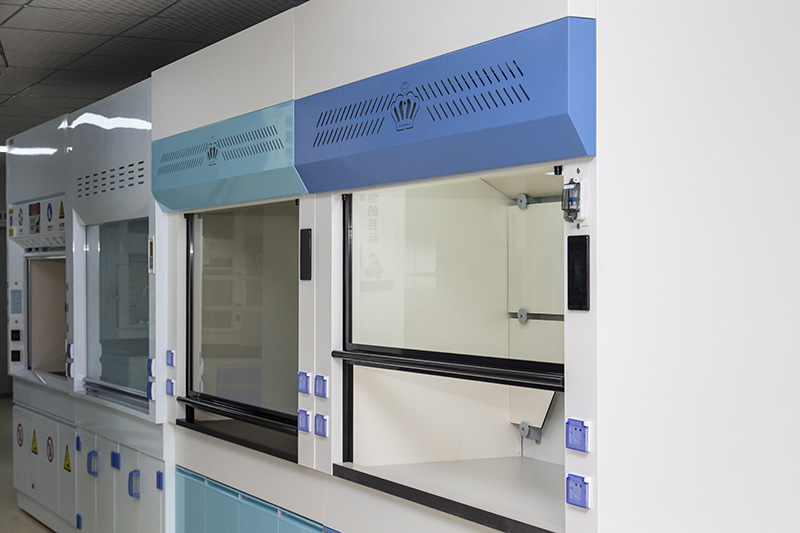In laboratory environments, safety and efficiency are paramount. Among the essential tools that ensure these aspects are the fume hood and the biological safety cabinet (BSC). Both serve to protect laboratory personnel and the environment from exposure to hazardous materials, but they do so in different ways and are suited for different applications. In this article, we will explore the distinctions between fume hoods and biological safety cabinets, focusing on key aspects such as what they protect, airflow mechanisms, applications, air filtration requirements, and maintenance complexities.
Table of Contents
What It Will Protect?
Fume Hood
A fume hood is designed primarily to protect laboratory personnel from inhaling hazardous chemicals and vapors. It does so by containing and expelling airborne contaminants through an exhaust system. However, it does not provide protection for the work product or the environment outside the hood from contamination.
Biological Safety Cabinet
A biological safety cabinet, on the other hand, offers three levels of protection: it safeguards the laboratory personnel, the work product, and the environment. BSCs are equipped with HEPA filters that trap and remove biological contaminants, ensuring a sterile environment for sensitive work, particularly with pathogens.
The Airflow In And Out
Fume Hood
The airflow in a fume hood is unidirectional. Air is drawn in from the front opening (the sash) and expelled through ducts connected to the building’s exhaust system. This flow of air helps to capture and remove hazardous vapors and fumes. The efficiency of a fume hood largely depends on maintaining proper face velocity, typically between 80120 feet per minute (fpm).
Biological Safety Cabinet
The airflow in a biological safety cabinet is more complex, as it is designed to create a sterile environment. There are three classes of BSCs, each with different airflow patterns:
Class I BSCs: Draw air in through the front, filter it, and expel it, similar to a fume hood, but with a HEPA filter to trap biological contaminants.
Class II BSCs: Have vertical laminar airflow, where air is drawn in through the front grille, filtered through a HEPA filter, and then recirculated within the cabinet to maintain sterility.
Class III BSCs: Completely enclosed and gastight, with air drawn in through HEPA filters and expelled through double HEPA filters, providing maximum protection for highly hazardous work.
Application
Fume Hood
Fume hoods are typically used in chemical laboratories for procedures that involve volatile substances, toxic fumes, or hazardous chemical reactions. They are ideal for protecting lab personnel from exposure to harmful gases, vapors, and aerosols.
Biological Safety Cabinet
Biological safety cabinets are used in microbiology, clinical, and biomedical research labs. They are essential when working with infectious agents, cell cultures, and other sensitive biological materials. BSCs ensure that both the laboratory environment and the work product are protected from contamination.
Does It Need An Air Filter?
Fume Hood
Fume hoods generally do not require air filters for their basic operation as they rely on the exhaust system to expel hazardous air. However, some specialized fume hoods, such as ductless fume hoods, use activated carbon filters to capture specific chemical fumes before recirculating the air.
Biological Safety Cabinet
Air filtration is a critical component of biological safety cabinets. BSCs are equipped with HEPA filters that remove 99.97% of airborne particles, including bacteria, viruses, and other biological contaminants. Some advanced models may also include ULPA (UltraLow Penetration Air) filters for even higher filtration efficiency.
Which One’s Maintenance Is More Difficult?
Fume Hood
Maintaining a fume hood primarily involves ensuring that the airflow remains consistent and the exhaust system is functioning correctly. Regular inspections and performance tests, such as face velocity measurements, are necessary. However, because fume hoods do not typically involve complex filtration systems, their maintenance is relatively straightforward compared to BSCs.
Biological Safety Cabinet
Maintenance of biological safety cabinets is more intricate due to the critical role of HEPA filters. Regular decontamination, certification, and filter replacement are required to ensure optimal performance and safety. Technicians must conduct airflow tests, filter integrity tests, and microbial contamination checks periodically. This makes BSC maintenance more demanding and time consuming.
Which One’s Cost Is Higher?
When considering the investment in laboratory safety equipment, cost is a significant factor. Generally, fume hoods are less expensive than biological safety cabinets due to their simpler design and functionality. BSCs, with their advanced filtration systems and more complex airflow mechanisms, come with a higher price tag.
Which One’s Energy Consumption Is More?
Biological safety cabinets, especially Class II and III, tend to consume more energy compared to fume hoods because of the continuous operation of HEPA filters and airflow systems. This should be considered when planning laboratory budgets and energy management.
Which One Need More Space?
Both fume hoods and biological safety cabinets require users to undergo specific training to ensure safe and effective operation. However, working with BSCs often demands more comprehensive training due to the complexity of maintaining a sterile environment and handling biohazardous materials.
Which One Need The User More strictly Training
Both fume hoods and biological safety cabinets require users to undergo specific training to ensure safe and effective operation. However, working with BSCs often demands more comprehensive training due to the complexity of maintaining a sterile environment and handling biohazardous materials.
Conclusion
Choosing between a fume hood and a biological safety cabinet depends largely on the specific needs of the laboratory. Fume hoods are ideal for chemical applications where protection from harmful vapors and gases is essential. In contrast, biological safety cabinets are crucial for microbiological and biomedical research, offering comprehensive protection for personnel, products, and the environment.
Understanding the differences in protection, airflow, applications, filtration requirements, and maintenance will help laboratory managers and safety officers make informed decisions to ensure a safe and efficient working environment. Both tools are indispensable in their respective domains, contributing to the overall safety and success of laboratory operations.




